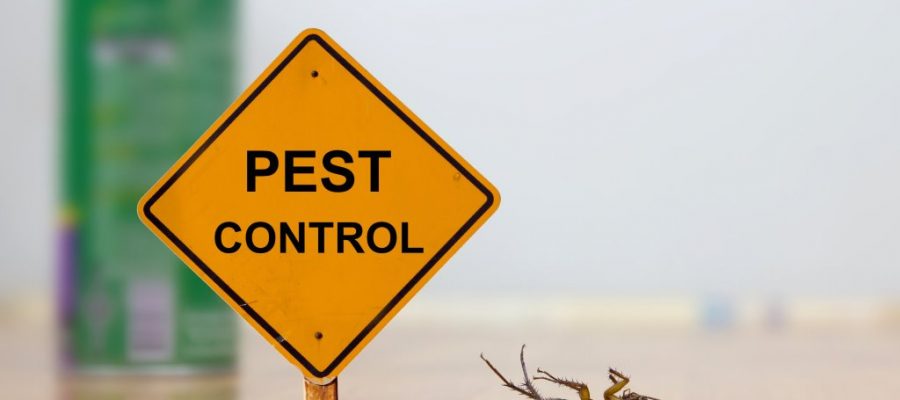Pest Control services for residential and commercial properties.
Eco-Friendly Bug Control Approaches for Managing Wild Animals in Urban Locations
Urban areas often locate themselves at the crossway of human activity and wild animals, leading to one-of-a-kind obstacles in pest management. These approaches not only shield the environment but also improve community engagement in wildlife management. As urban populaces continue to grow, understanding the characteristics of wild animals interactions becomes significantly essential.
Recognizing Urban Wildlife Dynamics
Understanding Urban Wildlife Characteristics is vital for establishing reliable and eco-friendly pest control strategies. Urban areas are increasingly ending up being habitats for various wildlife varieties, driven by elements such as environment fragmentation, food schedule, and human advancement. Acknowledging these dynamics enables for a nuanced method to pest monitoring that aligns with ecological concepts.
Urban wild animals commonly consists of types such as raccoons, squirrels, and birds, which adjust to city atmospheres, discovering particular niches in green areas, parks, and even suburbs. Their existence can cause problems with people, specifically when they make use of personnels for food and shelter. Understanding the habits and environmental duties of these species educates approaches that lessen unfavorable interactions while promoting biodiversity.
In addition, recognizing the interdependencies within urban ecosystems helps in recognizing vital areas for environment preservation and reconstruction. This knowledge contributes to the advancement of incorporated parasite monitoring (IPM) techniques that think about the ecological equilibrium, thereby lowering reliance on harmful chemicals. By fostering coexistence between humans and metropolitan wild animals, cities can create much healthier atmospheres that profit both citizens and local environments, paving the way for lasting metropolitan living.
Natural Repellents and Deterrents
All-natural repellents and deterrents supply a lasting option to standard parasite control methods by utilizing the power of nature to maintain unwanted types at bay. These environmentally friendly options normally use plant-based active ingredients, necessary oils, and other normally taking place substances that deter pests without damaging the setting.
One effective natural repellent is peppermint oil, which is understood to drive away rats and insects. Its solid fragrance is undesirable to many bugs, making it a popular choice for urban settings. Vinegar and citrus peels can serve as deterrents, as their strong smells are normally unappealing to numerous wild animals.
Furthermore, diatomaceous planet is a natural powder that can be spread out in locations vulnerable to insect activity, effectively drying out and preventing bugs without presenting threats to non-target types. In addition, garlic sprays and neem oil are acknowledged for their ability to fend off a variety of insects, consisting of both insects and larger wild animals.
Applying these all-natural repellents not only reduces reliance on chemical pesticides but also advertises a healthier urban environment, fostering a more well balanced coexistence in between humans and wild animals. By using these methods, city locations can properly take care of parasite populaces while decreasing ecological effect.
Environment Modification Strategies
Effective environment alteration techniques play an essential role in lasting parasite management by modifying the setting to make it less for pest problems. By understanding the environmental dynamics of city locations, residential property owners can implement strategic modifications that hinder bugs while promoting biodiversity.
(Silverfish control Port Charlotte)One main method entails maintaining correct hygiene. This consists of routine waste elimination, safeguarding trash can, and removing standing water to lower breeding sites for insects and rodents. Furthermore, landscaping methods such as choosing native plants can boost ecological equilibrium, supplying habitats for useful microorganisms while lessening resources for pests.
Another important strategy is to secure entrance factors in structures. Examining and fixing splits in structures, walls, and windows can substantially decrease parasite accessibility. In addition, producing physical barriers, such as fences or plant barriers, can prevent wildlife motion into human-inhabited areas.
Integrated Insect Monitoring Practices
Building upon habitat alteration methods, Mouse Control incorporated pest administration (IPM) techniques supply an all natural technique to controlling insect populaces while minimizing ecological influence. IPM incorporates numerous approaches, including organic, social, mechanical, and chemical controls, to accomplish reliable bug management.
Biological control involves the intro of natural killers or parasites to minimize parasite populations. Cultural practices, such as crop turning and cleanliness, disrupt pest life process and diminish their habitats - Pest Control. Mechanical controls, like traps and obstacles, offer immediate alleviation from bug stress without chemical intervention
Chemical controls are utilized as a last resource, concentrating on targeted applications that limit damage to non-target species and the setting. The selection of eco friendly pesticides, when essential, is indispensable to the IPM structure. Additionally, keeping an eye on bug populations and assessing prospective damages helps inform decision-making, making sure that treatments are timely and effective.
Community Participation and Education

(Mosquito control Port Charlotte)Workshops and informational sessions can outfit residents with expertise concerning native types, environment preservation, and efficient non-toxic bug administration strategies. Collaboration with schools, neighborhood companies, and federal government firms even more enhances educational outreach, ensuring that vital info reaches diverse target markets.
Furthermore, community-led campaigns, such as community clean-up days and environment repair jobs, not just advertise biodiversity however additionally strengthen area connections. Pest control service. By motivating locals to share their experiences and monitorings, communities can establish targeted approaches that address particular neighborhood bug problems
Including feedback from residents right into pest administration intends makes it possible for a much more receptive and adaptive method to wildlife difficulties. Eventually, notified and involved communities are key to achieving long-term success in environmentally friendly parasite control, resulting in much healthier city settings that respect both human and ecological demands.

Conclusion
In verdict, environment-friendly bug control approaches deal sustainable options for managing urban wild animals. By prioritizing habitat adjustment, using natural repellents, and implementing integrated bug monitoring methods, areas can cultivate a harmonious conjunction with local animals. Involving locals via education and learning improves awareness and urges liable wildlife interactions. Inevitably, these methods not just safeguard biodiversity however additionally promote ecological wellness, making certain city locations stay vivid communities where human beings and wild animals grow with each other.